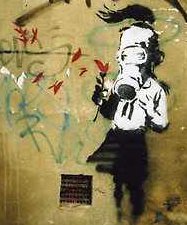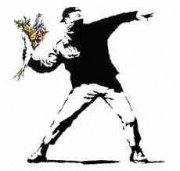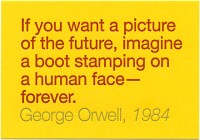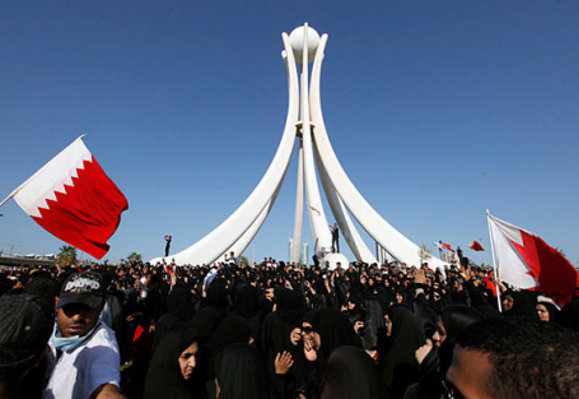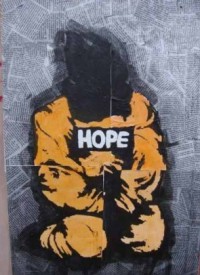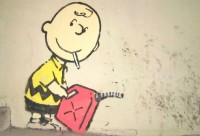Egypt, Bahrain, London, Spain?– Tahrir Square as a meme
Egypt, Bahrain, London, Spain?– Tahrir Square as a meme
Posted on May 21, 2011 by deterritorial
As in the early days and weeks of what have become known as “The Arab Spring”– a series of insurrections against long-established regimes across North Africa– the British mainstream media seem to have missed the boat on the current “May 15th” movement currently filling the streets and squares of cities and towns across Spain. The basis of the Spanish protests bear more similarities with those insurrections- anger at soaring youth unemployment, political corruption and, like much of Europe, huge social and financial restructuring plans in the name of “austerity”. But there are now interesting examples of how the shared causes of these grievances are having a feedback effect on the tactics of popular protest being used, and how certain tropes of “struggle” are spreading memetically between movements against poverty, corruption and austerity measures. Not least of these is the potent symbol of Tahrir Square, the hub of dissent during the uprisings in Egypt this year, which we are seeing in an entirely new incarnation in Puerta Del Sol in Madrid this week.
The relationship between the North African and Middle-Eastern uprisings and the problems of Europe is highly symbiotic, although rarely flagged up by much of the media on the conservative right and liberal left. Whilst they have tried to diffuse the anger and it’s repercussions by portraying the insurrections as part of a cultural “quest for democracy”, the Arab Spring is, quite plainly, the result of the economic forces of the global downturn and the financial crisis that precipitated it. Faced with already high graduate unemployment and rocketing food prices, the collapse of their export economies were the straw that broke the working-classes back in North Africa– the ensuing crisis of legitimacy, industrial actions and massive street violence (also completely downplayed by the European media) may have then been painted as a political crisis, but they were only the symptoms of a financial crisis with which working people had been lumbered, and could no longer sustain.
It’s perhaps understandable why the west has sought to play down the economic and class nature of the uprisings. It may well seem crass for young westerners to compare, for example, the student and EMA protests of last year with the oppression faced by Egyptian, Bahrainian and Libyan youths and rebels, but the fundamental issues that cause the discontent have similar roots and manifestations– very high graduate unemployment, a rising cost in living (food and, in Europe, rent) and collapsing legitimacy of traditional political structures, both of those in office and opposition- in short, a crisis of trust in the ideology of a social contract. For those involved to start drawing international and class comparisons and links, and for the street protests and direct actions to be generalised across Europe, would not suit the established Western democracies at all well. It’s against this attempt to distance these shared struggles that workers, demonstrators and anti-austerity activists are fighting, because the inevitable realisation would be made, sooner or later, that the problems of each country are not due to, for example, an overbureaucratic welfare state or mismanagement by a particular tyrant, but due to international issues of capital.
These are, indeed, international issues of class vs capital. But what has also been fascinating is the way certain tropes, tactics and symbols of these protests have spread across the continents memetically, not because of any specific tactical or political efficacy relevant to each individual location, but as an only semi-conscious, infectious “linking” of different “struggles”. As an example, the image of Tahrir Square has now become a fundamental core feature linking many of these movements. When tens of thousands of Egyptians headed for the Square on the days following their “day of rage” against the government, they did so for practical reasons relevant to their very specific social and geographic conditions– the need to coalesce for self-defence reasons, to gain a certain communal courage, to keep out in the open and in the eye of the international media, expecting a brutal repression from the Egyptian state security services. But the idea of Tahrir– a central encampment, held for as long as possible, acting as a hub for the worlds media, has since become more than a practical development. It has become a meme of the social movements.
To give a brief overview, memetics is a theory of how information and ideas transfer within and between social contexts. Originally posited by Richard Dawkins in his book “A Selfish Gene”, the theory contends that ideas pass through populations in much the same way as genes do, adapting and evolving according to the conditions they inhabit, with versatile and strong ideas thriving and spreading whilst ossified and unsubstantial ones die of, or perhaps only thrive within a very specific environment and are able to spread outside that environment. Dawkins used the analogy of genetic mutation to explain his basic outline of a theory of ideas, but it remained very much a creative analogy.
With the development of sophisticated communicative technologies, not least the internet, the idea of memetics soon found a fertile breeding ground itself. A meme is no longer a theory of ideas, but an object in itself. There’s much, much more to be said on this than could possibly be included in this article, but today meme can be a self-aware, self-referencing idea, joke or image that finds resonance within a culture or cultures online and in real life, and spreads, changing constantly on it’s journey. It’s even possible for the meme to become a proverbial dustmans broom, with signifiers and content changing until it is almost totally empty of it’s original form, but retains enough generalised understanding to be able to function, for the idea or joke to continue. And this is an important point– a meme doesn’t have to resonate in exactly the same way with all participants to take off. A single idea or image can be read and reflected on by many different audiences. …more



